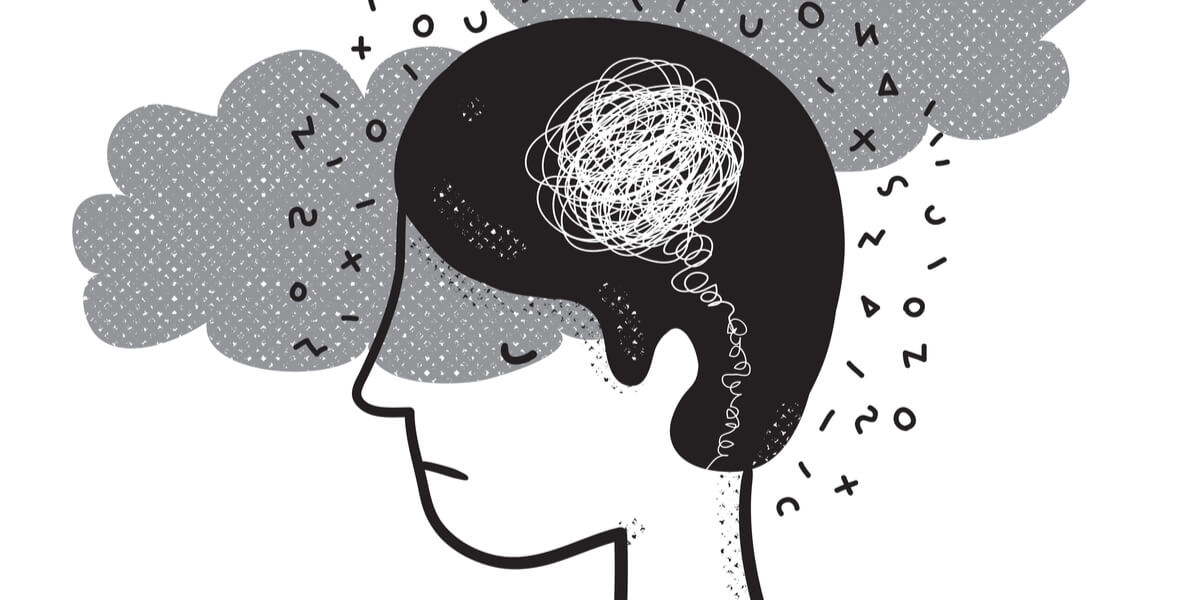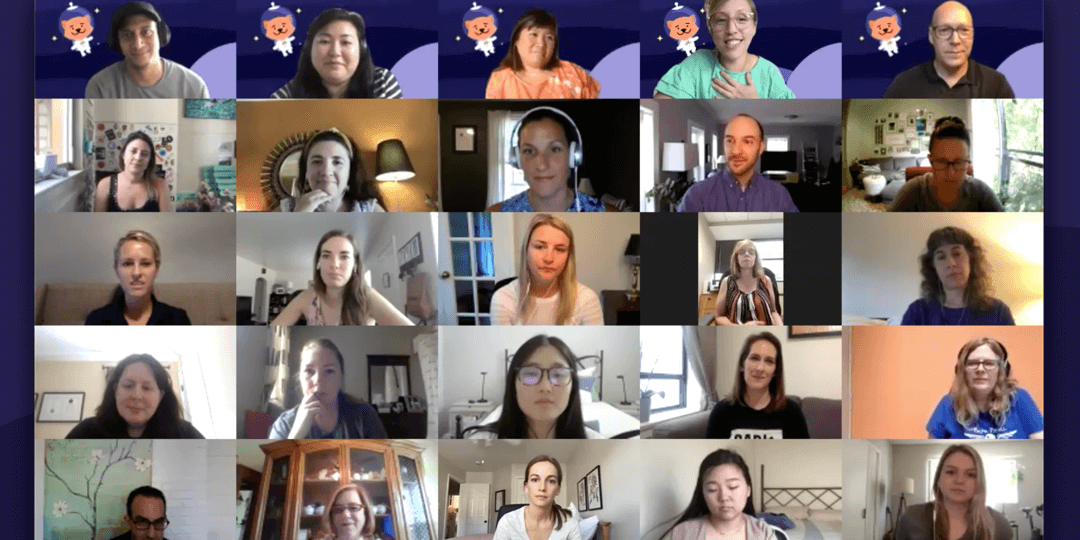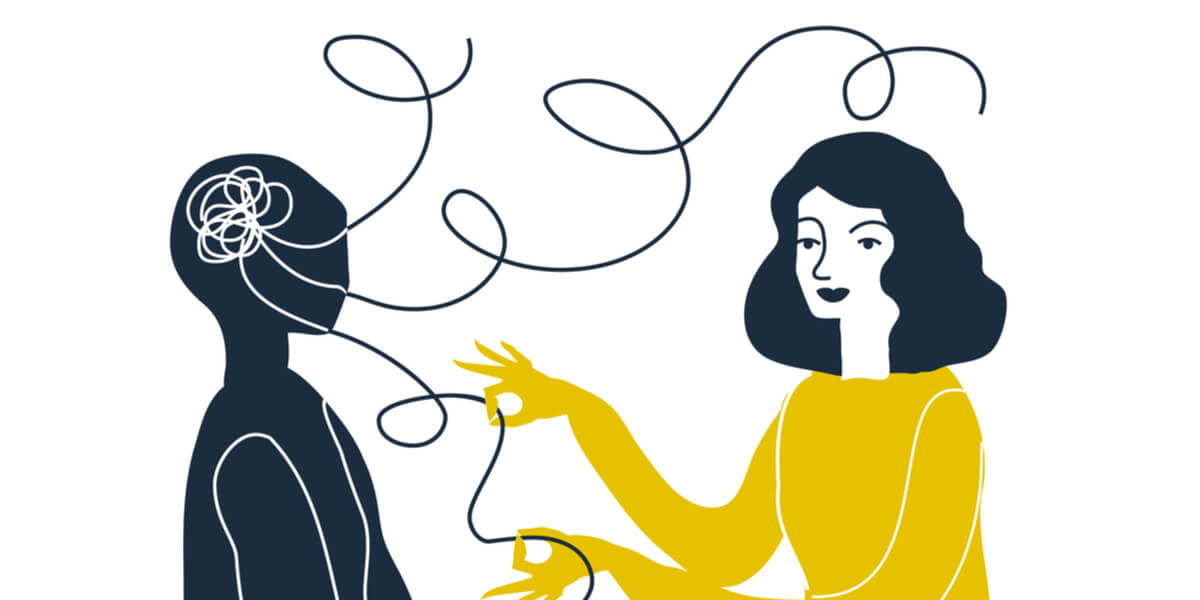The acronym “PTSD,” short for “post-traumatic stress disorder,” gets thrown around a lot — but what, exactly, does it really mean?
Coined to describe the lingering physical and emotional aftereffects of a shocking, destabilizing event, PTSD was first included in the third edition of the Diagnostic and Statistical Manual of Mental Disorders (DSM-III) in 1980, although the symptoms commonly associated with PTSD have been observed and described for centuries. But while the concept is widely recognized in military personnel, combat veterans, and victims of assault, the truth is that PTSD can and does affect people who have encountered trauma in a huge variety of settings — including the workplace.
In fact, the uniquely harrowing circumstances that many workers have faced over the past year have highlighted just how prevalent workplace PTSD can be. Doctors, nurses, EMTs, police officers, and other workers whose work routinely exposes them to trauma have been vocal about the extraordinary, additional work-related stresses the COVID-19 pandemic has placed on them. Other workers — including grocery store employees, nursing home staffers, and cleaning crews — suddenly found that just showing up to work put them on the front lines, with the vastly elevated risks to their health and well-being that that entailed. The pandemic itself is a major PTSD trigger — and for many Americans, that trigger was directly tied to their work.
But if the many difficulties of the past several years — including not just COVID but natural disasters; a national reckoning about widespread, systemic racial injustice; and more — have had a silver lining, mental health professionals posited it could be this: Perhaps now people are open to a more nuanced, expansive view of what PTSD can be — and what it can be caused by.
“Some common misconceptions about PTSD relate to the belief that only experiences such as war combat, rape, or a severe accident lead to the development of PTSD” said Carla Marie Manly, PhD, clinical psychologist and author of Joy from Fear: Create the Life of Your Dreams by Making Fear Your Friend. “Given recent natural disasters and the pandemic, first responders and healthcare workers are discussing their own PTSD cases.
“This is creating a necessary and much-needed shift in the validation of PTSD that arises from front-line exposure,” she continued. “Workplace PTSD can be triggered by the issues noted above, in addition to coworker difficulties, witnessing a coworker’s significant trauma, witnessing client [or] patient trauma, and overly taxing employment schedules.”
What Is Workplace PTSD?
“PTSD is commonly defined as a psychiatric disorder that develops after witnessing or experiencing extremely traumatic events, such as combat; crime; an accident; a natural disaster; or a physical, emotional, or sexual assault,” Manly explained.
However, the DSM still does not include a definition of post-traumatic stress disorder specific to the workplace, Manly said. But that doesn’t mean workplace PTSD doesn’t have consistent, recognizable patterns.
Joyce Marter, licensed psychotherapist and author of The Financial Mindset Fix: A Mental Fitness Program for an Abundant Life, said workplace PTSD is characterized by the “different emotional, cognitive, and physical challenges people experience when they have difficulty coping with negative, abusive, or traumatic aspects of their jobs.” This could mean situations such as a supervisor dressing down subordinates in front of colleagues; or being required to be responsive and available to requests at any time of day, including days off; or being asked to perform tasks they aren’t trained for, such as performing maintenance on machinery they’re unfamiliar with or without the required safety protections.
But Marter said it’s important to know that, although workplace PTSD can be triggered by the workplace, it looks and feels like the PTSD triggered by other situations.
“Physical symptoms include nervousness, jitters, insomnia, nightmares, or a startle response,” she said. “Emotionally, we might not be able to feel close to others as we experience apathy, anxiety, depression, hopelessness, despair, and even suicidal ideation.
“Meanwhile,” she added, “persistent negative thoughts about work may make it difficult to concentrate. These symptoms disrupt home and/or work life and cause significant distress.”
What Triggers Workplace PTSD
What’s most critical to know, experts said, is that there’s no one set of triggers for PTSD. The catalyst can be a stressful event or catastrophic accident — a death or injury that happens in the workplace, for example — and is witnessed by a large group. For other people, it can be triggered by a perception or realization that they aren’t physically safe at work due to treacherous working conditions, exposure to COVID, violence, or another reason.
PTSD can also be caused by the office culture itself, Marter noted. Ongoing exposure to things like emotional abuse, threatening behaviors, or sexual or racial harassment can result in PTSD in the staff exposed to it. It can be even be prompted by less overtly egregious but persistent career harms that Marter described as “chronic overwork; unrealistic performance expectations; not being given the resources to succeed at your job; undelivered promises; boundary violations such as expecting you to do work when on vacation; and not allowing you to use your benefits like vacation, sick time, or leave” — cues that tell employees they aren’t psychologically safe at work.
According to Kelly Kellerman, licensed clinical social worker at Thriveworks counseling practice in Oakland, MI, workplace PTSD can also arise when an event that happens in a person’s place of employment triggers the stress response from an employee’s previous traumatic life experience. “A coworker or supervisor with poor boundaries [who is] aggressive or manipulative can remind a person of an abusive parent, or an employee may have to walk to a car in a dark parking lot and it can trigger a memory of a past sexual assault,” she said.
Who It Affects
Experts stress that while there are elements that can predispose someone to suffering from PTSD, there’s no way of knowing for sure who might be affected and who won’t. Certain risk factors do exist, however. “If you have a history of dealing with depression, anxiety, or other mental health conditions, [or] if you are a survivor of abuse or neglect, you are more likely to develop workplace PTSD,” Marter said.
“Members of marginalized populations are more likely to experience workplace PTSD because they already deal with the traumas of racism and discrimination,” she continued. “During the pandemic, first responders, healthcare providers, and essential workers are more likely to experience workplace PTSD” given the heightened risk of physical danger as well as the heightened emotional and psychological stakes that working on the front lines has required.
But being more likely to suffer from this condition doesn’t mean it’s limited to those groups of people. Just like with a broader PTSD diagnosis, experts said that workplace PTSD can affect anyone. (PTSD in general is more widespread than many people might suspect: The American Psychiatric Association (APA) estimates that approximately 3.5% of American adults are affected by PTSD every year, and that as many as one in 11 people will be diagnosed with it in their lifetime.)
So companies that want to deal with the aftermath of a traumatic workplace event, the fallout from a toxic former employee, or broader social forces like the ongoing pandemic need to know that there’s no handbook for who will or won’t develop PTSD.
“It’s important for HR staff to know that genetic, environmental, personality, and historical elements all contribute to a person’s propensity for developing PTSD,” Manly said. “For example, if two people are exposed to the same experiences in a hospital setting, one may develop PTSD and another may not.
“This is not the result of any ‘weakness’ in the person who develops PTSD,” she added. “Whether or not a person develops PTSD depends on their unique interplay of genetic, environmental, personality, and historical factors.”
And PTSD doesn’t just affect the people most directly impacted by the events, Manly said. “Vicariously experiencing trauma and life-threatening situations can result in the development of PTSD,” she noted.
“Anyone can experience a trauma,” Kellerman agreed. “Why some people are more impacted than others is complex. It often depends on their age, their ability to tolerate uncomfortable feelings, and [whether they have] supportive relationships with family and friends. All these factors impact our ability to cope.”
The bottom line? “Anyone can suffer from workplace PTSD,” Marter said.
What Workplace PTSD Looks Like
Symptoms of PTSD can manifest in both physical symptoms and in mental health problems that show themselves at home and at work. And while cases of post-traumatic stress disorder can look different in different people, experts said there are some common symptoms that can make performing the functions of their jobs challenging for employees.
“Workplace PTSD can manifest as chronic anxiety, hyper-reactivity, exhaustion, depression, emotional numbing, self-isolation, sleep difficulties, lack of focus, irritability, negativity, avoidance of work, intrusive thoughts, self-blame, and blaming of others,” Manly said.
While some of the effects are noticeable to coworkers, many times the condition’s symptoms or the coping strategies used to deal with it aren’t obvious to those around the sufferer. Workers trying to manage their own PTSD may be reliving the traumatic experience or experiences with flashbacks, nightmares, and intrusive thoughts; they may feel numb or detached, or be self-isolating or avoiding certain places, people, or situations to avoid triggers; or they may be experiencing sleeplessness, nightmares, irritability, or being constantly in a state of heightened emotional arousal.
PTSD can result in a “change of personality,” Kellerman said, with a “change in performance, physical health complaints, social withdrawal, absenteeism, erratic behaviors, increased conflict in the workplace, and an increase in substance use.”
What Human Resources Departments Need to Know About Workplace PTSD
Workplace PTSD — whether it’s directly caused by the workplace itself or by broader social stressors or current events — needs to be on the radar for Human Resources departments, experts stressed. “Workplace PTSD can negatively impact attendance, job performance, productivity, efficiency, and efficacy,” Marter said. “It can also cause accidents, errors, and turnover.”
Being aware of PTSD is the first step, mental health professionals agree. “An HR department should have general knowledge, and perhaps training, about trauma, stress, and burnout. You can’t address something if you don’t know it exists,” Kellerman said.
For companies that want to be proactive about assisting employees who suffer from workplace PTSD and create a supportive workplace culture, professionals recommend some best practices.
Marter said providing channels for employees to file reports or complaints about conditions that can trigger the PTSD — anonymously, if needed — is critical, as is offering mental wellness training for staff that covers awareness, conflict resolution, and effective communication.
“HR departments should know about the prevalence of workplace PTSD and work with the leadership team to cultivate a compassionate and collaborative workplace culture that promotes mental wellness, psychological safety, and work-life balance,” said Marter.
What’s not necessary, Kellerman said, is for HR departments to think they need to to turn themselves into full-fledged mental health providers. “They don’t have to give therapy to their employees, but having awareness of community resources and referrals [can] help connect employees to help,” she said. “Creating an atmosphere where employees can talk about what they are experiencing is key. Sometimes job accommodations and modifications can help an employee when they are trying to recover [from PTSD], [and] I think the promotion of general wellness is also a good practice.”
For Human Resources professionals, connecting employees to resources they can use, such as an employee assistance program (EAP) that can refer employees to mental health hotline or counseling services, should your firm offer one, can be incredibly beneficial. (There are also lists of professional counselors available through the American Psychological Association and on PsychologyToday.com.) Awareness of the prevalence of workplace PTSD can also mean HR teams advocating for their firms to offer EAPs if they don’t already or insurance benefits that cover counseling, referral services, and health savings accounts — all tools that can also help employees seek PTSD treatment when needed.
—
Experts agree that companies have a crucial role to play in supporting employees who are dealing with a difficult challenge, particularly those that result in significant mental and emotional duress, like post-traumatic stress disorder. Support from family, friends, and loved ones — as well as professional medical care, when needed — are essential in dealing with PTSD. But in addition, a healthy and supportive company culture, including understanding, compassionate coworkers, supervisors, and leadership who are informed and educated about this condition, as well as access to resources, can make an enormous difference for employees with workplace PTSD, or any kind of PTSD. “Recovery from PTSD generally takes time; focused mental health treatment; and positive support from HR staff, the workplace environment, friends, and family," Manly said.







